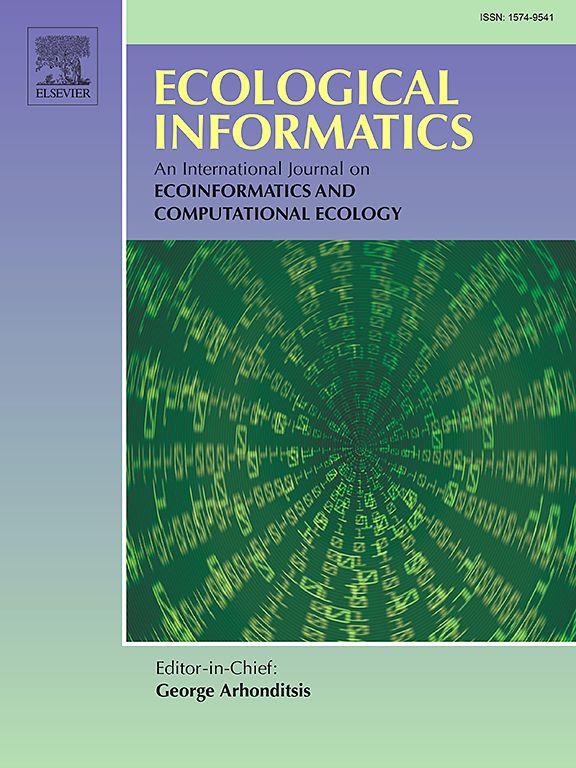Integrating generative AI and climate modeling for urban heat island mitigation
IF 5.8
2区 环境科学与生态学
Q1 ECOLOGY
引用次数: 0
Abstract
Conventional urban heat island (UHI) studies often rely on static urban morphology inputs and oversimplified design variables, limiting their ability to support dynamic, climate-responsive urban planning. To address this gap, this study proposes a novel framework that integrates a hybrid generative adversarial network (GAN) with the Urban Weather Generator (UWG) for high-fidelity 3D urban form generation and microclimate simulation. The proposed GAN architecture combines the geometric accuracy of Pix2pix with the style refinement capability of CycleGAN, achieving improved morphologicalrealism (SSIM = 0.754, R2 = 0.834 against ground-truth data) and resolving key distortions that impede microclimate analysis. Applied Shenzhen Bay Super Headquarters as a case study, ten urban development plans were generated and evaluated for their thermal performance. Results revealed that plans exceeding a facade-to-site ratio of 5.0 and footprint density of 0.30 showed intensified nocturnal heat retention, with Plan V exhibiting a + 2.3 °C nighttime temperature increase. In contrast, Plan I, with lower morphological density, achieved a 1.8 °C reduction, demonstrating superior heat dissipation. These insights provide actionable guidelines for climate-responsive urban planning, advocating for lower-density layouts with optimized facade exposure and increased vegetative cover. The proposed framework offers a robust tool for planners and policymakers to assess and design urban forms that enhance climate resilience while reducing UHI intensity.

整合生成式人工智能和气候建模以缓解城市热岛
传统的城市热岛(UHI)研究往往依赖于静态的城市形态输入和过于简化的设计变量,限制了它们支持动态的、气候响应型城市规划的能力。为了解决这一差距,本研究提出了一个新的框架,该框架将混合生成对抗网络(GAN)与城市天气生成器(UWG)集成在一起,用于高保真3D城市形态生成和微气候模拟。所提出的GAN架构结合了Pix2pix的几何精度和CycleGAN的风格细化能力,实现了改进的形态真实感(SSIM = 0.754, R2 = 0.834),并解决了阻碍小气候分析的关键失真。以深圳湾超级总部为例,生成了10个城市发展规划,并对其热性能进行了评估。结果表明,当立面与场地之比超过5.0、足迹密度超过0.30时,平面V的夜间温度增加了+ 2.3°C。相比之下,方案1具有较低的形态密度,实现了1.8°C的降低,显示出优越的散热性。这些见解为气候响应型城市规划提供了可操作的指导方针,倡导低密度布局,优化立面暴露和增加植被覆盖。拟议的框架为规划者和决策者评估和设计城市形态提供了一个强有力的工具,可以增强气候适应能力,同时降低城市热岛强度。
本文章由计算机程序翻译,如有差异,请以英文原文为准。
求助全文
约1分钟内获得全文
求助全文
来源期刊

Ecological Informatics
环境科学-生态学
CiteScore
8.30
自引率
11.80%
发文量
346
审稿时长
46 days
期刊介绍:
The journal Ecological Informatics is devoted to the publication of high quality, peer-reviewed articles on all aspects of computational ecology, data science and biogeography. The scope of the journal takes into account the data-intensive nature of ecology, the growing capacity of information technology to access, harness and leverage complex data as well as the critical need for informing sustainable management in view of global environmental and climate change.
The nature of the journal is interdisciplinary at the crossover between ecology and informatics. It focuses on novel concepts and techniques for image- and genome-based monitoring and interpretation, sensor- and multimedia-based data acquisition, internet-based data archiving and sharing, data assimilation, modelling and prediction of ecological data.
 求助内容:
求助内容: 应助结果提醒方式:
应助结果提醒方式:


